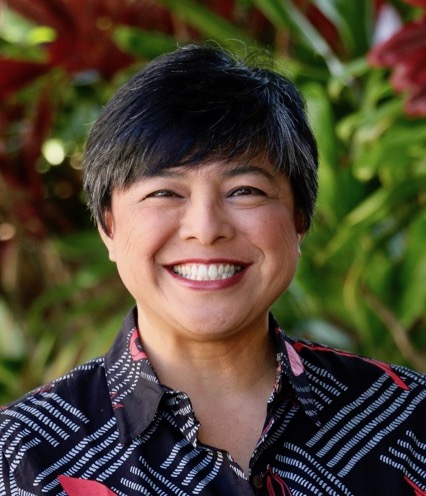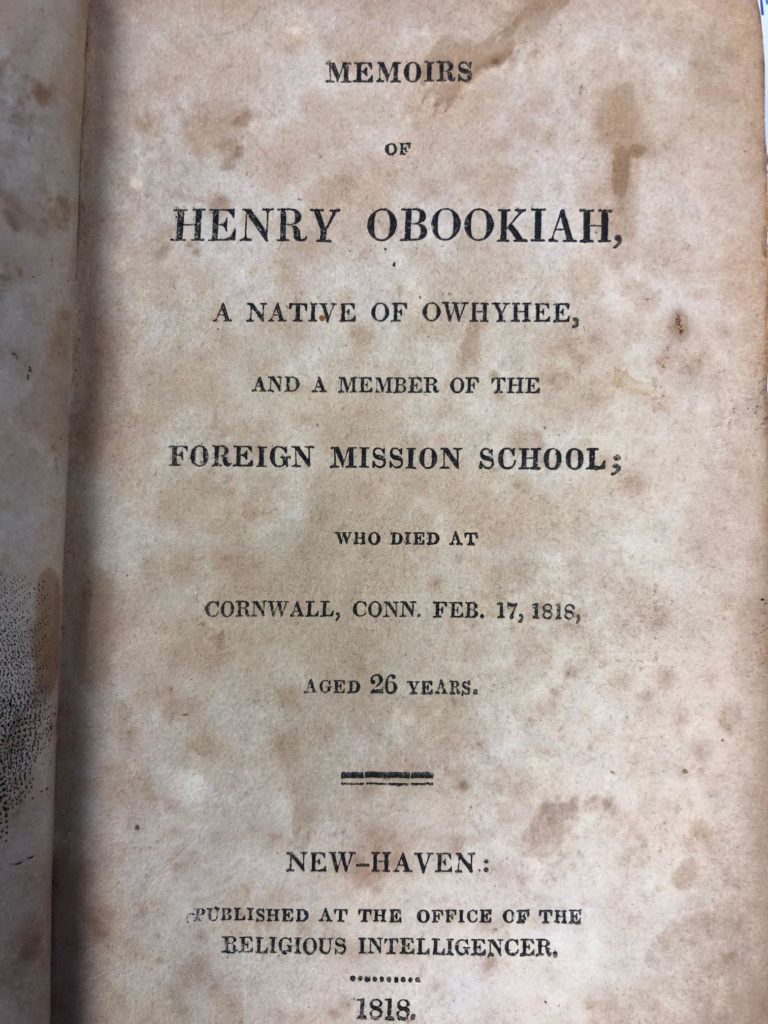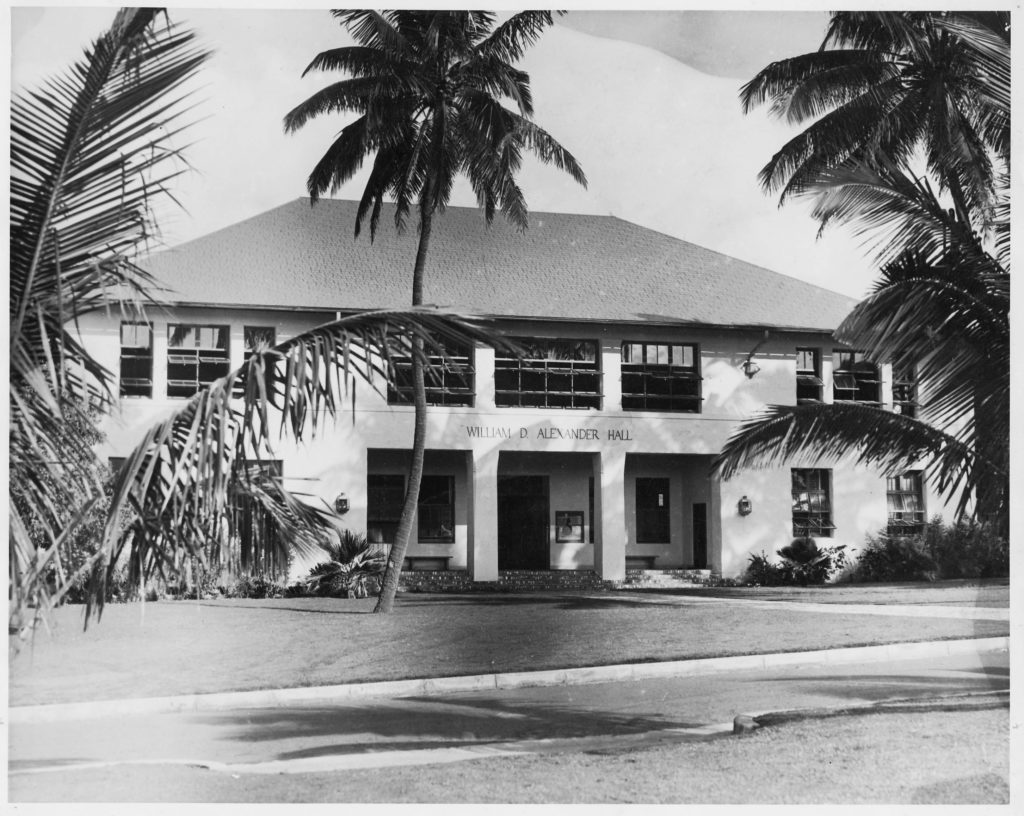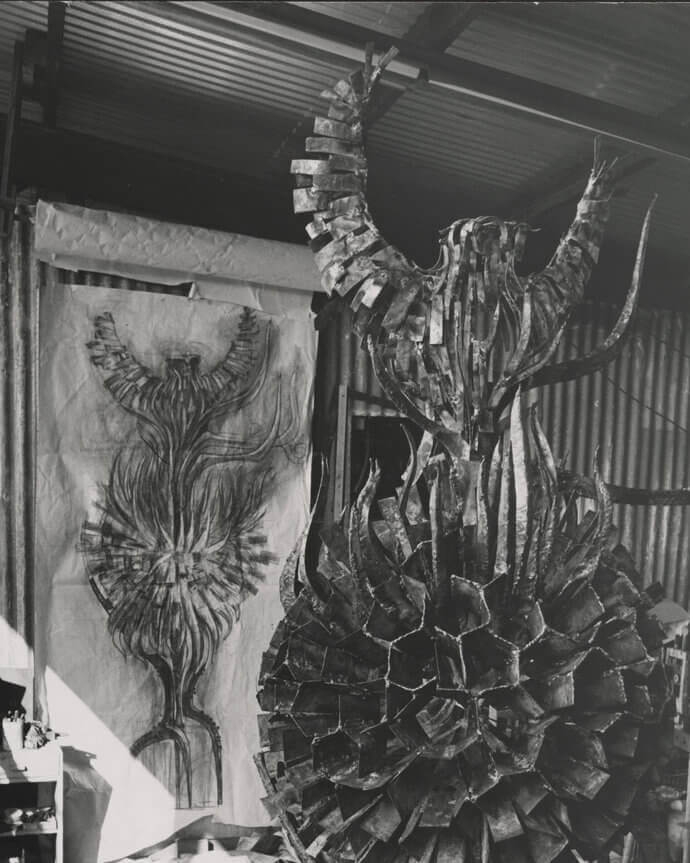The Punahou Archives is being temporarily housed in Castle Hall during the Cooke Library remodel. The move was a feat of 11 years of planning that included 10 weeks of moving over 3,000 boxes of assets and over a thousand feet of shelving. Student archive apprentices and student volunteers contributed to the effort.
In honor of National Archives Month in October, we celebrate Punahou’s own Archives, a treasure trove that catalogs over 180 years of Punahou history. Archivist Kylee Mar answers frequently asked questions related to the Archives and her role as the School’s Archivist, since taking the position in 1999.

What is the Punahou School Archives?
The Archives started as a loose collection of gifts, records and valuable materials handed down between administrations and librarians for decades before formalizing in the 1950s. It’s made up of School publications, photographs, multimedia, artifacts, institutional records and manuscript collections which explain the historical events, growth and development of the School.
Who can use the Punahou Archives?
Students, faculty and staff, alumni, parents and the community are welcome to use the Archives for research and discovery. Currently, all inquiries and reference work are done online.
What is archived and what isn’t?
We exist to collect, conserve and share the records and documents that tell the story of Punahou. So, our goal is to archive everything related to that story. However, if the physical condition of the asset has deteriorated, for instance, it is moldy or pest-infested, we have to consider what it would take to preserve it and make it accessible and weigh that against retaining the asset.
How are old and fragile documents preserved?
Assets are housed in temperature and humidity-controlled areas with water monitors on the floors, in case of flooding, and a very aggressive pest management policy and educational program. Depending on the condition of the document, image or audio/visual asset, we will re-house it in archival preservation materials for maximum support and conservation.
What’s the oldest item in the collection?
This book, “The Memoirs of Henry Obookiah,” was published in 1818, and tells the story of Henry ʻŌpūkahaʻia, who played a pivotal role in inspiring the missionary presence in Hawai‘i.



Oldest item in the Archives
How are digital records preserved?
Over the past 20 years, the Archives has received everything from floppy discs to 3/4″ videotape and CD/DVDs to external hard drives. It is an absolute challenge to keep up with digital files. In order to digitize an asset, such as a photograph, map or document, we scan it at high resolution, save it on a secure server and create additional files that can be used for more frequent and easier access. We are currently working on a digitization initiative, launched by a generous donation from Lum Yip Kee, Ltd, with the hope to make archived publications, maps and images available to the public. Visit the Punahou Digital Archives.
As Punahou’s Archivist, what is your favorite part of the collection?
Oh my, that’s hard! It’s like trying to select a favorite child. One of my favorite collections is the Punahou medals, rings and pins collection. These 3D artifacts were actually worn by a person. That person’s memories are still embedded and attached. These assets are extremely personal and it’s an honor to share each one and the stories behind them to others.

Do you have photos of old Punahou buildings?
Our photograph collection houses many images as well as sketches of our first buildings on campus. This photograph of Alexander Hall is one of our favorites because of its unique angle. We will not be able to recreate this photo from this exact angle again because the Cooke Library now exists on the spot where this photo was taken. Our most popular images are campus buildings and maps. They are also very fragile and therefore the Digital Archives is the best way to access content without harming the assets.

Any other interesting artifacts you care to highlight?
The bronze owl that was a focal point at the entrance to the Cooke Library will be preserved in a partnership with the Academy Art Department, who will restore and repair the sculpture over the next two years. The sculpture was part of the Cooke Library dedication ceremony on January 17, 1965. Artist Edward Brownlee selected the fruit of the hala tree to represent youth and the owl represents wisdom and beauty. The sculpture is included in the new Academy Learning Commons design.

What is your biggest challenge as an archivist?
Documenting Punahou’s pandemic experience was challenging, especially with everything online and changing so fast. We needed to continuously think about how to archive the time period while we were making history. We had to ensure we have accurate records so that when people look back 100 years from now, they can see what we experienced, much like we’ve been able to study what things were like on campus and for students during the Spanish flu and World War II.
How can I learn more about the Punahou Archives?
The best place to start is the “Punahou in 50 Objects” collection, which provides a window into the Archives as well as shares some of our favorite Punahou stories and memories.
More from the Archives
Visit the Digital Archives
The Path to Punahou’s New Mission Statement
From the Archives: Prince Kūhiō (c. 1888)
Archivists in the Making
Digital Archives Go Live!
A Look Back: Carnival
A Look Back: Christmas
A Look Back: Halloween
Music Timeline
The Days After the Attack on Pearl Harbor
Then and Now: Waterhouse Pool
Then and Now: The President’s Home
